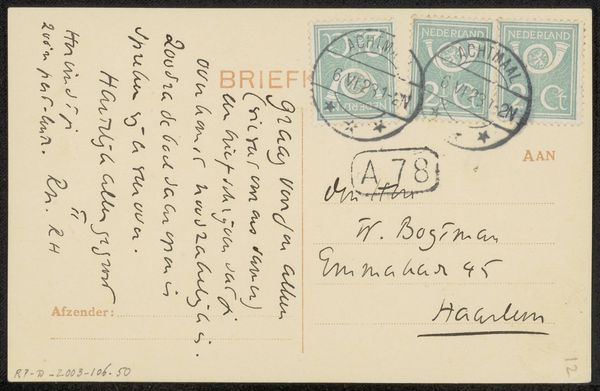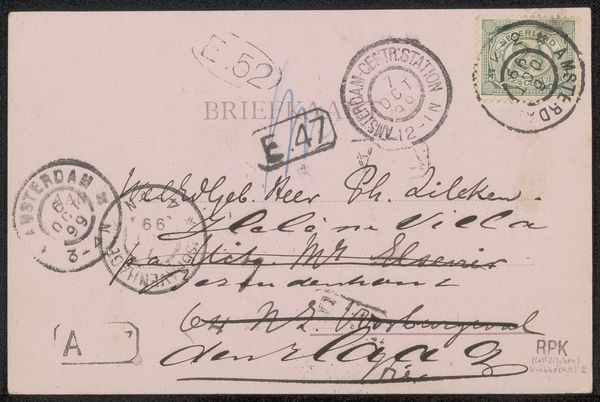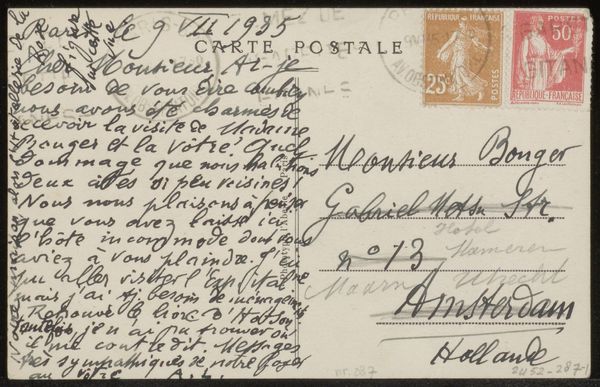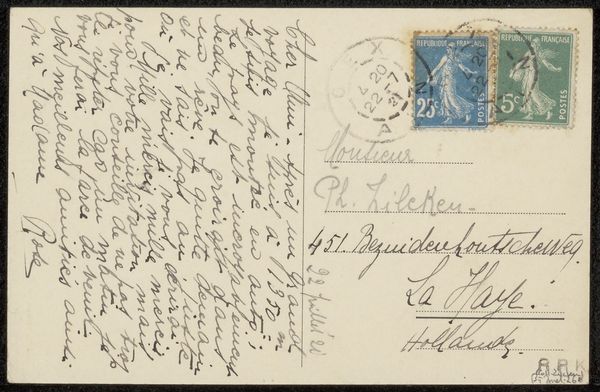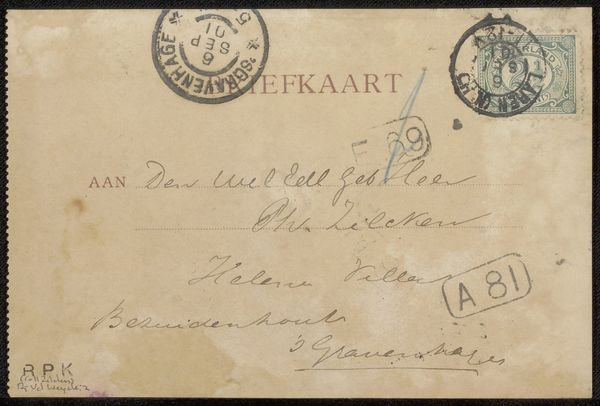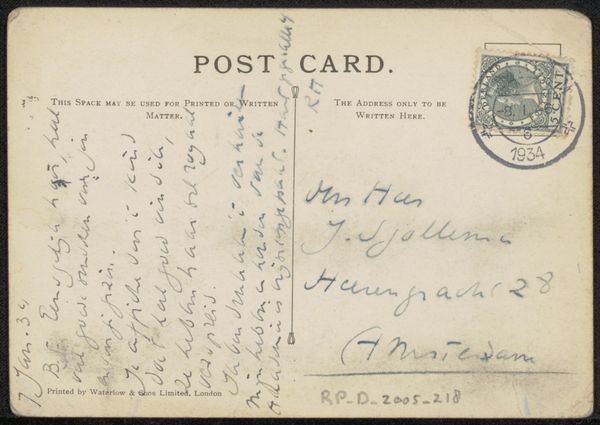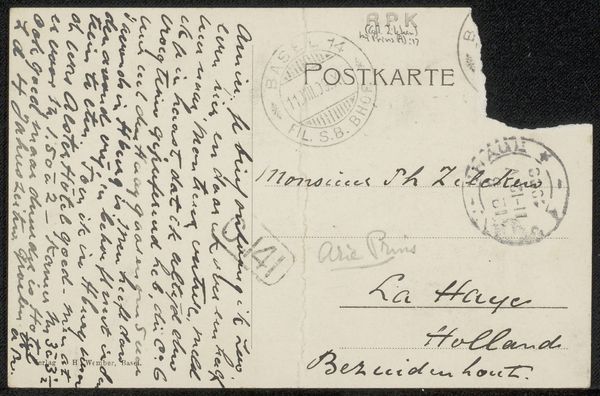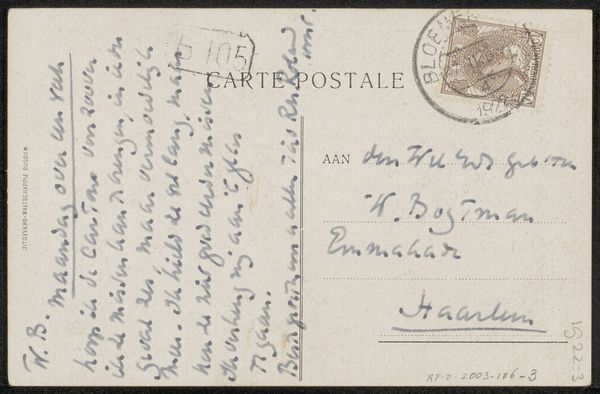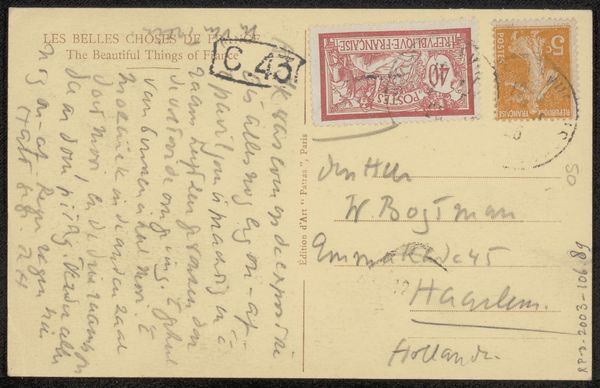
drawing, paper, ink
#
drawing
#
paper
#
personal sketchbook
#
ink
Copyright: Rijks Museum: Open Domain
Curator: This work is titled "Briefkaart aan Willem Bogtman," a postcard to Willem Bogtman, possibly from 1921, crafted by Richard Nicolaüs Roland Holst. Editor: At first glance, I see mostly handwritten script covering what appears to be a fairly typical Dutch postcard from that period. The visual texture comes from the stamps and the varying pressure of the ink on paper. Curator: Indeed. Let's consider the context: Holst was a prominent figure in the Dutch Arts and Crafts movement, deeply invested in the socialist ideals of the time. He likely saw even the creation of a simple postcard as a conscious act tied to production and communication. Editor: Absolutely, but the calligraphy here is incredibly gestural, giving the work a distinctly personal quality, a kind of private language beyond its explicit textual message. The dark ink against the off-white paper creates a powerful contrast. How would you characterize its style? Curator: Well, Holst's background in decorative arts certainly informs the aesthetic. He emphasizes the value of handmade communication against the rise of industrial printing and distribution, even as that printing facilitates its exchange! Editor: Yet that emphasis doesn't simply glorify a bygone craft—it suggests a negotiation between traditional forms and the demands of a modern society. Notice, too, the materiality: the fibrous paper itself speaks of artisanal production and care. Curator: And it is, finally, an epistolary artwork-- a hand-delivered artwork embedded in everyday materials of life. This artwork is as much about that exchange as the quality of Holst’s draughtsmanship, a tangible connection forged via the postal system itself. Editor: I'm struck by the interplay between public and private inherent in the form itself. This common form also functions as a portable personal statement. Holst’s approach balances functional design with this intimate expression. Curator: Reflecting on this piece, one can’t help but see Holst’s concern with the intersection of the handmade, the message itself, and their shared impact on recipient, Bogtman, at the time. Editor: I'm now noticing so many aspects of visual structure I missed at the outset: the grid of stamps, text as field. There are worlds contained within this postcard, it's message both material and intimate.
Comments
No comments
Be the first to comment and join the conversation on the ultimate creative platform.

